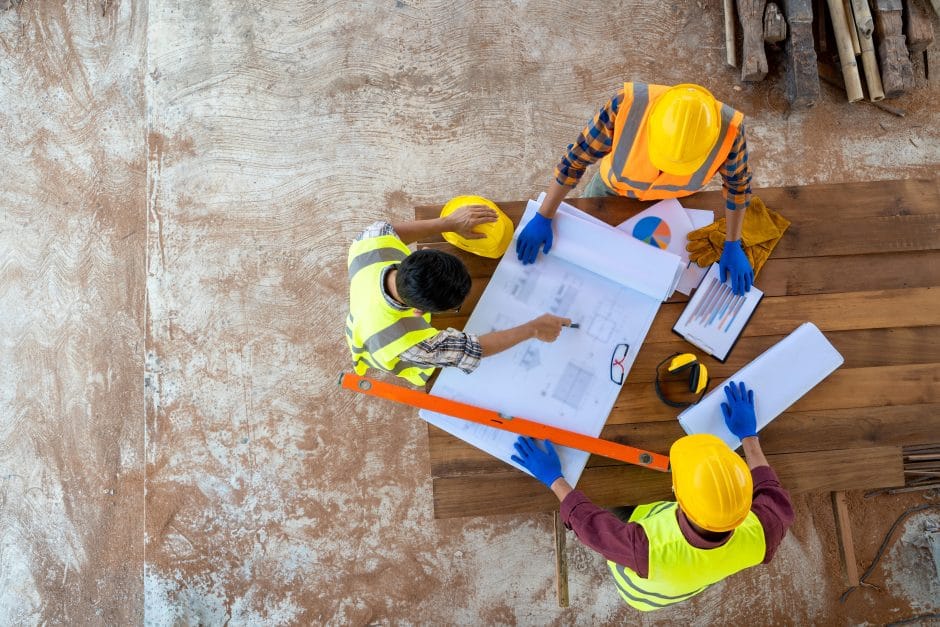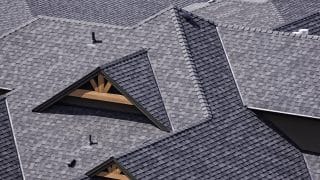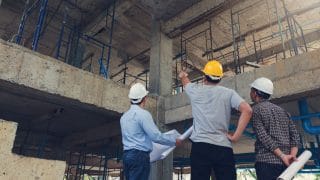What’s the Difference Between Commercial and Residential Construction?
Dec 07, 2021

Residential buildings house people and commercial buildings support their business activities. While that definition is technically accurate, the differences between residential and commercial construction are much more layered, from the building materials used in each kind of construction, to the way projects are funded, to the codes and permits needed even to plan the buildings in the first place. It is helpful to understand exactly what kinds of buildings are residential and commercial before breaking down the differences in how they’re built.
What is commercial construction?
Think of commercial construction as any type of property that’s constructed for commercial purposes. Commercial buildings support the daily ventures of those who work in them.
The following are common types of commercial properties:
- Land investments
- Office spaces
- Retail buildings
- Storage units
- Industrial buildings
- Hospitals
Although large-scale apartment buildings do house people, they’re considered commercial property because the building space is leased out as rental business.
The commercial construction industry has changed as technology has advanced, says Christine Fiore, program director for construction management at Drexel University in Philadelphia. “Traditionally, when we think about the commercial construction industry, we think about office buildings, high-rise structures, schools, and other retail facilities. [But] there are many different structures that the commercial industry is responsible for these days that weren’t even dreamt about 20 years ago.”
What is residential construction?
Residential construction is almost every type of building used to house people, both in individual and multi-family dwellings.
The following are common types of commercial properties:
- Single-family homes
- Duplexes, triplexes, fourplexes
- Townhouses
- Co-ops
- Condominiums
Key differences between commercial and residential construction
The core difference between commercial and residential construction is the purpose for which each type of building is constructed. But there are key differences between them that extend beyond their use.
Building materials
Every kind of building requires certain materials to complete its design. In the United States, the housing industry generally uses timber to frame houses. Wood is both cost-effective and sturdy for construction on a relatively small scale.
Timber could never support the weight of a large-scale commercial building, so the commercial industry usually uses steel frames—which are not only stronger than timber but are also more pliable, allowing large buildings to withstand high winds, hurricanes, and other natural forces because the buildings can sway within a safe range.
Concrete is frequently used with steel-framed commercial buildings, although the residential industry is gravitating toward concrete because of its durability. While there is some crossover between materials used for residential and commercial buildings (for instance, a smaller retail building might be built with a timber frame), the only hard and fast rule is that the material has to support the design. This is where the quality and grade of materials comes into play. For instance, industrial and commercial steels come in a wide range of grades, and different designs will require certain ratings.
Codes and permits
Every kind of construction has to meet codes, and construction can only begin when the construction team has been issued a permit. But the codes that commercial buildings must meet are different from residential buildings. Commercial buildings have stricter codes because they’re generally a lot larger, accommodate many more people, and include many more building components.
For instance, commercial buildings need to accommodate complicated electrical and plumbing systems, IT systems, accessibility concerns, and parking garages. Residential buildings are smaller and generally simpler to build, so there are fewer considerations (and codes are generally less strict). However, regulations can vary between states and even between towns. Commercial contractors usually know their own local and federal building regulations.
Residential buildings house people and commercial buildings support their business activities. While that definition is technically accurate, the differences between residential and commercial construction are much more layered, from the building materials used in each kind of construction, to the way projects are funded, to the codes and permits needed even to plan the buildings in the first place. It is helpful to understand exactly what kinds of buildings are residential and commercial before breaking down the differences in how they’re built.
What is commercial construction?
Think of commercial construction as any type of property that’s constructed for commercial purposes. Commercial buildings support the daily ventures of those who work in them.
The following are common types of commercial properties:
- Land investments
- Office spaces
- Retail buildings
- Storage units
- Industrial buildings
- Hospitals
Although large-scale apartment buildings do house people, they’re considered commercial property because the building space is leased out as rental business.
The commercial construction industry has changed as technology has advanced, says Christine Fiore, program director for construction management at Drexel University in Philadelphia. “Traditionally, when we think about the commercial construction industry, we think about office buildings, high-rise structures, schools, and other retail facilities. [But] there are many different structures that the commercial industry is responsible for these days that weren’t even dreamt about 20 years ago.”
What is residential construction?
Residential construction is almost every type of building used to house people, both in individual and multi-family dwellings.
The following are common types of commercial properties:
- Single-family homes
- Duplexes, triplexes, fourplexes
- Townhouses
- Co-ops
- Condominiums
Key differences between commercial and residential construction
The core difference between commercial and residential construction is the purpose for which each type of building is constructed. But there are key differences between them that extend beyond their use.
Building materials
Every kind of building requires certain materials to complete its design. In the United States, the housing industry generally uses timber to frame houses. Wood is both cost-effective and sturdy for construction on a relatively small scale.
Timber could never support the weight of a large-scale commercial building, so the commercial industry usually uses steel frames—which are not only stronger than timber but are also more pliable, allowing large buildings to withstand high winds, hurricanes, and other natural forces because the buildings can sway within a safe range.
Concrete is frequently used with steel-framed commercial buildings, although the residential industry is gravitating toward concrete because of its durability. While there is some crossover between materials used for residential and commercial buildings (for instance, a smaller retail building might be built with a timber frame), the only hard and fast rule is that the material has to support the design. This is where the quality and grade of materials comes into play. For instance, industrial and commercial steels come in a wide range of grades, and different designs will require certain ratings.
Codes and permits
Every kind of construction has to meet codes, and construction can only begin when the construction team has been issued a permit. But the codes that commercial buildings must meet are different from residential buildings. Commercial buildings have stricter codes because they’re generally a lot larger, accommodate many more people, and include many more building components.
For instance, commercial buildings need to accommodate complicated electrical and plumbing systems, IT systems, accessibility concerns, and parking garages. Residential buildings are smaller and generally simpler to build, so there are fewer considerations (and codes are generally less strict). However, regulations can vary between states and even between towns. Commercial contractors usually know their own local and federal building regulations.
Cost and funding sources
The differences in costs between commercial and residential properties can be huge. Materials for commercial construction are generally higher grade and therefore more expensive, and commercial construction teams are paid to keep tighter deadlines and are also often more expensive because they use specialized equipment and techniques.
Commercial projects may be funded by the government, a corporation with bank financing, or a developer. And, as Fiore notes, the commercial industry often requires complicated strategies for financing. “Many times you will see in the commercial industry that projects are funded by both public and private entities at the same time,” she says. “So there might be some public and private money involved or projects that are completely publicly funded, like schools and hospitals. The commercial industry requires a lot of creativity, and builders on the commercial side will focus on different areas [of financing].”
Residential projects may be financed by a developer (in the case of a multi-home development), but they are often paid for by homeowners with bank loans or cash. In some instances, as in the construction of low-cost housing, the government or a nonprofit agency may fund a project.
Equipment
The massive scale of many commercial projects requires specialized equipment and heavy machinery, like earthmovers and cranes. Few residential projects use this kind of machinery (there are exceptions, of course). But because commercial construction is so specialized and potentially dangerous, commercial and residential projects hire different contractors and equipment specialists.
Timelines
The faster a commercial project is completed, the more cost-effective the build since a quick turnaround means lower labor costs. The same is true of a residential construction project, but because of the scale and sheer number of workers on a commercial project, labor costs rise exponentially when a project doesn’t stay on schedule.
Commercial projects often have a tighter working plan going in, so (with some exceptions) they’ll often move faster.
Because multiple investors may be involved in financing a commercial building, they’ll expect a streamlined workflow and on-time delivery. Also, since the longer a building takes to build, the more delayed the business activities it can accommodate will be, a timeline is doubly important.
Residential homes often take longer to complete than commercial projects that are far larger, not only because fewer workers are employed on the job, but also because the property owner may make decisions as they go along or change their minds multiple times through the process. In general, there’s little room for change once a commercial build is underway.
Design customization
There’s room for more creativity and customization in a residential construction project, both before and during the building process. Because of the relatively simple nature of homebuilding (fewer workers, less equipment, simpler financing, easier permitting), homeowners have more leeway than commercial builders when it comes to design customization. In fact, many commercial builders specialize in building the same kind of building over and over again to streamline costs and mitigate risks.
There is some crossover between residential and commercial building, but in general, these two sides of the industry stay in their own lanes. When researching the difference between the industries, it pays to do your due diligence: What skills and level of education are required to be successful in each? What is the difference in cost—and therefore salary for contractors and builders? Is it important to be able to make and change design decisions on the fly? These considerations should help as you consider the differences between working in residential and commercial construction.
MT Copeland offers video-based online classes that give you a foundation in construction fundamentals with real-world applications, like how the commercial construction industry works today. Classes include professionally produced videos taught by practicing craftspeople, and supplementary downloads like quizzes, blueprints, and other materials to help you master the skills.







